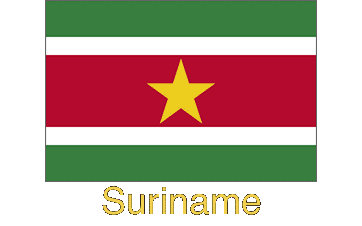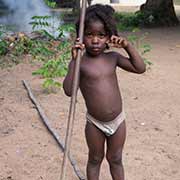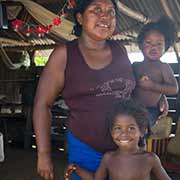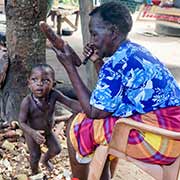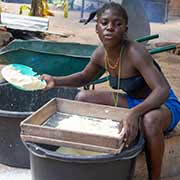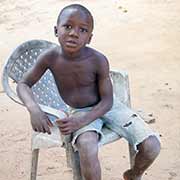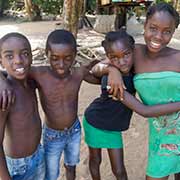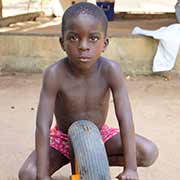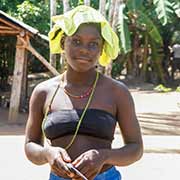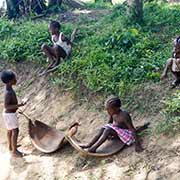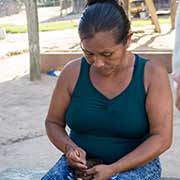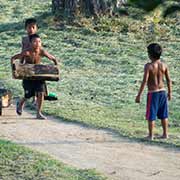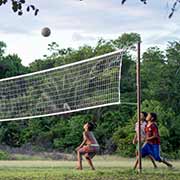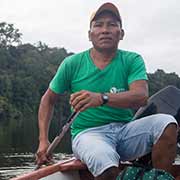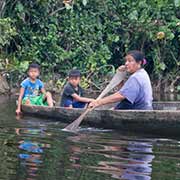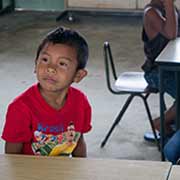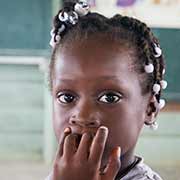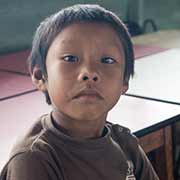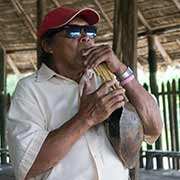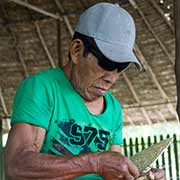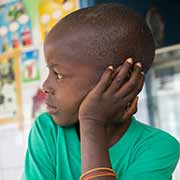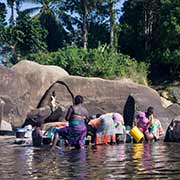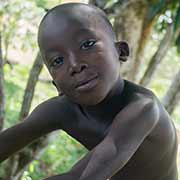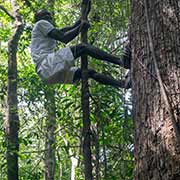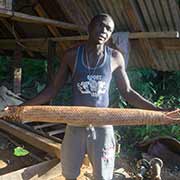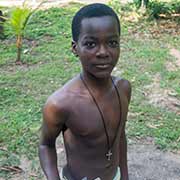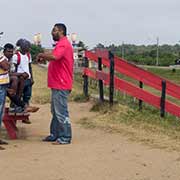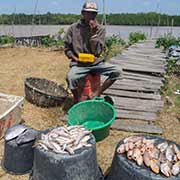Photos of The People of Suriname
The People of Suriname
Suriname has a very diverse population of approximately 566,000, most of whom live on the country's north coast. It was inhabited for about 5,000 years by various Arawak and Carib Amerindian peoples long before European contact, that started around the year 1600 with some temporary trading posts; the first European colonists came in 1651 and over the years English, Dutch and Portuguese Jews settled here. Most descendants of Dutch farmers left Suriname after independence.
you may then send it as a postcard if you wish.
The Amerindians, the original inhabitants of Suriname, now form only 3.7% of the population. Of those, most Arawak and Kalina (Caribs) live in the north near the coast, while the Tiriyó (Trio) Wayana and Akurio in the south of the Sipaliwini District. Africans were brought here during the slave trade and during that time many escaped into the forest, where they set up independent tribal societies; their descendants are the Maroons, who now form 21.7% of the population; the two main Maroon groups are the Ndyuka and Saramaccans. Creoles are mixed descendants of African slaves and Europeans (mostly Dutch) and form 15.7% of the population.
After the abolition of slavery in Suriname, the Dutch government signed a treaty with the United Kingdom on the recruitment of contract workers and from 1873 East Indians began migrating from British India, mostly from Uttar Pradesh, Bihar and surroundings. Their descendants now form 27% of the population. After 1890 the Dutch also started to recruit Javanese people, from what was then the Dutch East Indies (Indonesia); almost 33,000 were sent to Suriname; their descendants now form 14% of the population. There are also Chinese, mainly descendants of the earliest 19th-century contract workers, Levantines, primarily Maronites from Lebanon, Jews and others.


